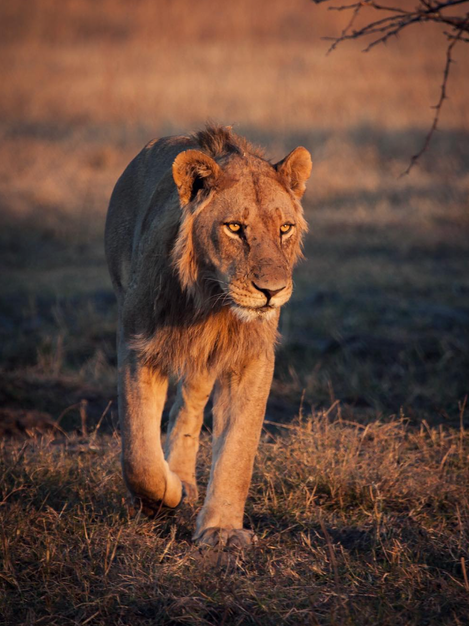Poachers beware: New online tool traces illegal lion products back to source

URBANA, Ill. — A new conservation tool from the University of Illinois Urbana-Champaign is helping protect lions across Africa, where populations have plummeted in recent decades due to poaching and other factors. With the Lion Localizer and a simple DNA test, authorities can examine the geographic origin of illegally traded teeth, claws, bones, and other body parts from the poached animals.
Currently, the origin of most lion products are unknown — but that's vital information to understand the impact on local populations and where to allocate resources, said Rob Ogden, director and co-founder of TRACE Wildlife Forensics Network, who partnered with U. of I. on the project.
“For example, the West African lion population is tiny, and it's really, heavily threatened. We cannot afford to lose any; we count individuals,” Ogden said. “But if a product is coming out of East Africa, then it might not be so critical in terms of population numbers, although law enforcement still needs to know about it.”
TRACE contacted Alfred Roca, professor in the Department of Animal Sciences in the College of Agricultural, Consumer and Environmental Sciences (ACES) at U. of I., after Roca published the Loxodonta Localizer, a similar tool developed to trace illegal ivory back to wild elephant populations.
Roca tapped Wesley Au, doctoral researcher in the informatics program at U. of I., to build a database comprising every sequence of relevant lion mitochondrial DNA ever published, representing dozens of studies and 146 locations across Africa and India. The work is described in the Journal of Heredity and was supported by the United States Agency for International Development (USAID)’s VukaNow program.
“When a user queries their lion mitochondrial DNA sequence in the Lion Localizer, the system will compare it with the database of sequences and then provide a map showing where the lion was likely poached,” Au said. “Many of those localities are linked to unique sequences, which can be especially useful for locating the source population.”
The team focused on mitochondrial DNA for several reasons. First, cubs inherit their mitochondrial genome from their mothers. And since female lions stay with their prides and roam shorter distances than males, these sequences represent more permanent pins in the map.
In addition, the mitochondrial genome, at around 16,000 base pairs in lions, is much smaller and less complex than the genome contained in the cell’s nucleus. Small genetic fragments spanning just 350 to 1,140 base pairs are enough to generate matches in the Lion Localizer — a drop in the mitochondrial genome bucket.
Finally, each cell is packed with hundreds to thousands of mitochondria, ensuring plenty of genetic material should be available even in degraded tissue. Together, all of these factors mean labs with older or basic equipment should be able to extract and amplify enough DNA to enter into the Lion Localizer.
“Many labs in Africa or the transit and destination countries that confiscate lion parts should be able to generate sequences from mitochondrial DNA,” Roca said. “It's a straightforward lab procedure.”
Lion poaching accounts for 35% of all human-caused deaths, but lion parts are also removed and sold after retaliatory killings in response to livestock loss. With only 23,000 to 39,000 lions left in Africa, the Lion Localizer could play an important part in keeping those numbers from falling any further.
“From my perspective, I think getting a better handle on the trade routes — where are the lions coming from? — will help a lot,” said Simon Dures, project officer at TRACE. “The Lion Localizer is very much designed as an intelligence tool. It allows countries to see these patterns and focus on areas where lions are not doing particularly well in the wild. Just giving them that extra chance.”
The study, “Lion Localizer: A software tool for inferring the provenance of lions (Panthera leo) using mitochondrial DNA,” is published in the Journal of Heredity [DOI:10.1093/jhered/esad072]. Authors include Wesley Au, Simon Dures, Yasuko Ishida, Cory Green, Kai Zhao, Rob Ogden, and Alfred Roca. The research was supported by the United States Agency for International Development (USAID), grant no. G-017, and VukaNow.